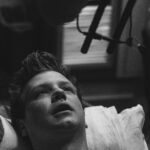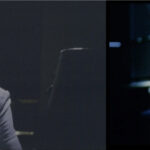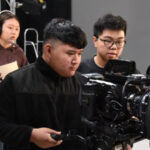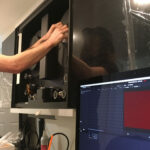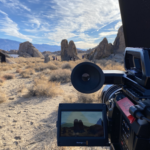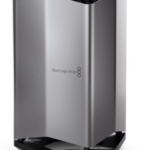Chinese feature film “Dream Forest” was entirely shot with Blackmagic URSA Mini Pro 4.6K G2, Blackmagic Pocket Cinema Camera 4K and Blackmagic URSA Mini 4.6K digital film cameras, and color graded using DaVinci Resolve Studio editing, grading, visual effects (VFX) and audio post production software and DaVinci Resolve Mini Panel.
Directed by Fan Chao and starring Niu Ben, Du Yuan, Shi Ke and Ma Su, “Dream Forest” follows the story of an autistic child and his family’s unrelenting pursuit of their dreams with the help of various members of society. The film hits theaters nationwide on April 1, 2023.
An Chuncheng, the DoP for “Dream Forest,” used four Blackmagic Design cameras throughout the shoot, including two URSA Mini Pro 4.6K G2s as the main cameras, one Pocket Cinema Camera 4K as the B camera, which was mounted on sliders and vehicles for special angles due to its compact size, and one URSA Mini 4.6K mounted on a Steadicam system for moving shots.
“For the most part, the mood of the story is emotionally low and depressing, which we wanted to build with the help of film grains permeating the space, just like the 2016 Oscar nominated film ‘Carol,’ which used the unique grain and texture of 16mm film to express delicate emotions. Therefore, we needed cameras that could simulate the film look,” said An.
“I have been using URSA Mini 4.6K since 2016, and I am very familiar with the image quality and characteristics of the camera. I was confident that the URSA Mini Pro 4.6K G2 camera, which inherited the filmic look and 15 stops of dynamic range from the original model while getting new features, such as high frame rate recording and internal ND filters, would be capable of handling the production,” he continued.
An shot some test footage with the URSA Mini Pro 4.6K G2, Pocket Cinema Camera 4K and URSA Mini 4.6K equipped with vintage lenses, which the director was happy with, ultimately deciding to use the cameras for the film.
An noted that some of the URSA Mini Pro 4.6K G2’s features helped improve the shoot’s efficiency. “The ability to apply LUTs to the monitoring output is great. I created six LUTs with DaVinci Resolve Studio for different atmospheres and loaded them into each Blackmagic Design camera for colour consistency, allowing the director to see if the footage had achieved his vision, which simplified the shooting process. With these LUTs, the colourist could also intuitively understand the look we wanted, which would also be the starting point for his colour grading work,” he said.
The URSA Mini Pro 4.6K G2’s built in ND filters also brought great convenience to the shoot. “The production took place in summer, and the ND filters were great for easily reducing the exposure when shooting outdoor scenes in the scorching sun by simply pressing the physical buttons on the camera body. The position and shape of the wheel for cycling through the ND filters were very user friendly, allowing the cinematographers to quickly operate through muscle memory,” An noted.
“In the cases where we needed to preserve more details in highlights, I usually set the ISO to 2,000 and then quickly reduced the exposure using the ND filters. This greatly improved our efficiency in the production,” he added.
The false colour feature of the Blackmagic Design cameras was another tool that assisted the cinematographers with accurate exposure control. The two physical function buttons on the URSA Mini Pro 4.6K G2, which were shortcuts for false colour and LUTs by default, further streamlined the operation of checking exposure or viewing the monitoring output with a LUT applied without having to navigate through menus.
According to An, the cinematographers also appreciated the menu design of the Blackmagic Design cameras. “The logic of these menus is clear and concise, and the required settings can be quickly found by swiping through the pages, just like operating a smartphone,” he said.
An also mentioned that the Pocket Cinema Camera 4K, which was used as the B camera, was fully utilized by the cinematographers due to its portability and cinematic image.
When the director needed to capture some fleeting city scenes, the Pocket Cinema Camera 4K was taken out for a day and a half of establishing shots. The compact body made it easy and quick to set up the camera for special angles, and the MFT mount allowed for convenient switching of different lenses. When returning to the DIT room to hand over the footage that night, the key shots were quickly previewed by applying a stylized LUT. The cinematographers were pleasantly surprised by the high image quality recorded by the small camera and used it more confidently in subsequent shoots.
The film was shot over 26 days in the roasting summer, with many intense shooting sessions, but all four cameras withstood the high temperatures and continuous high intensity usage without any malfunctions. “Many indoor scenes were shot with closed windows and doors to preserve the smoke and location sound, so the temperature was also very high, and some of the shoots lasted more than thirty hours continuously,” said An.
The final color grading of the film was done by Lyu Hongtao using DaVinci Resolve Studio and DaVinci Resolve Mini Panel.


